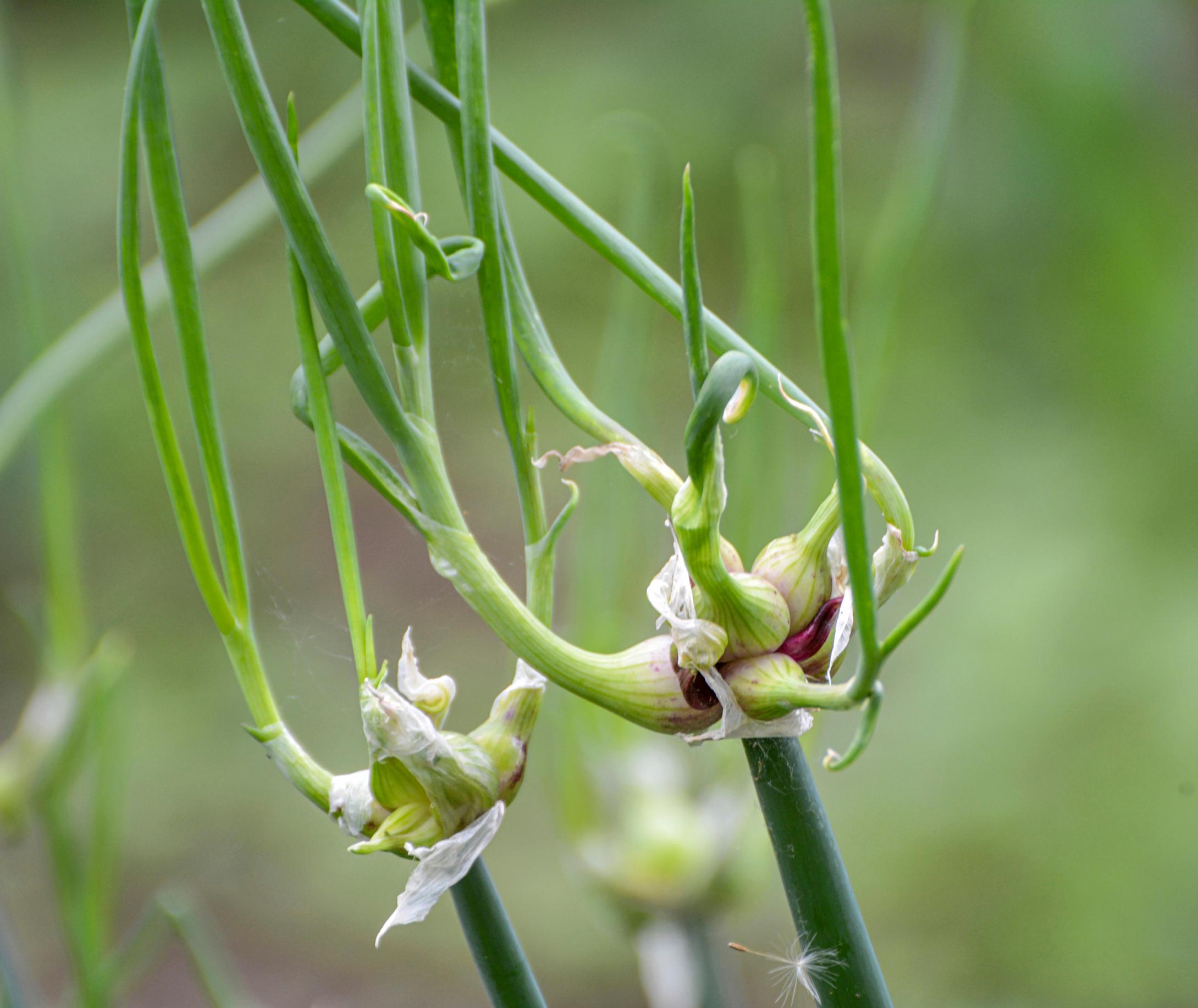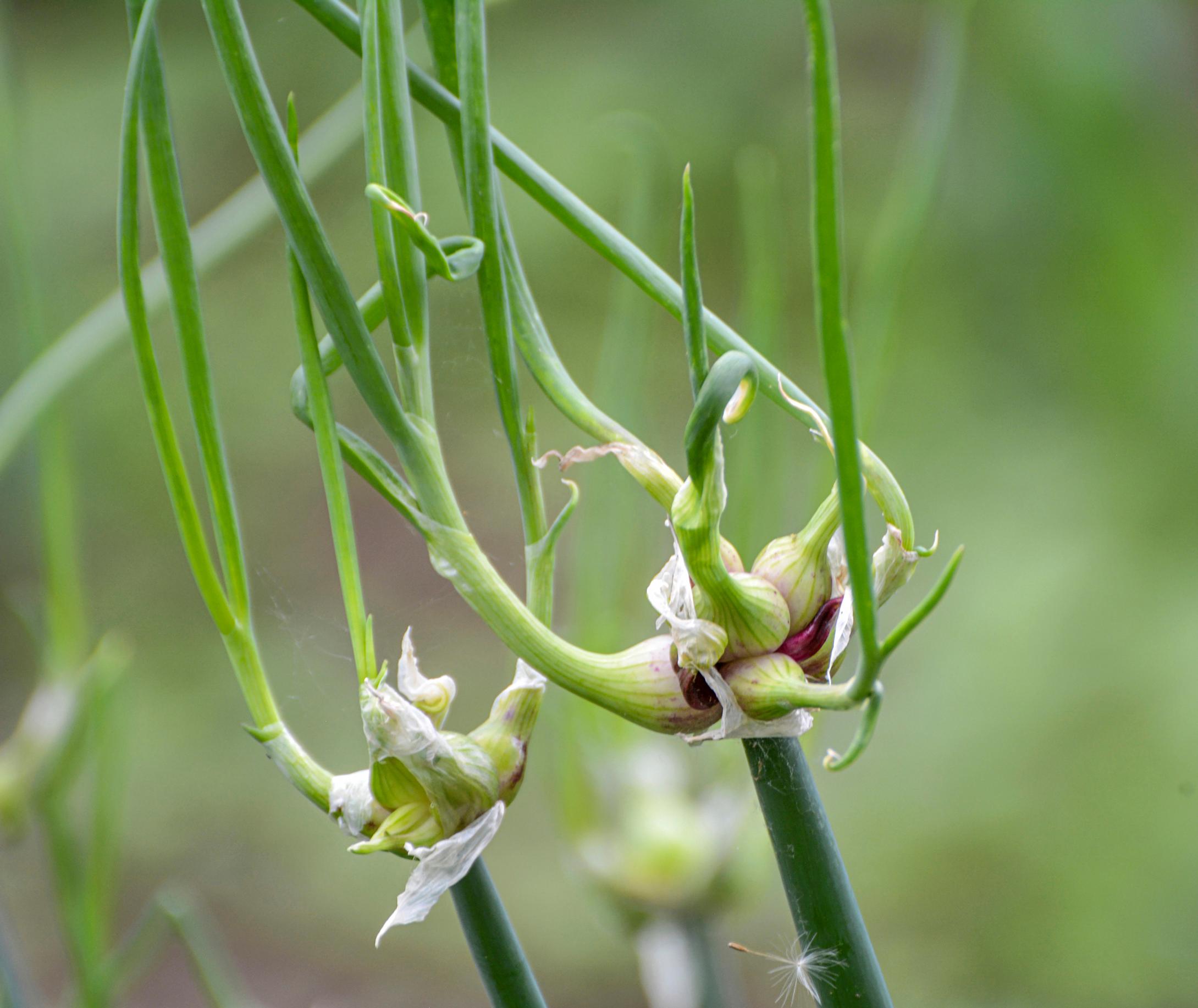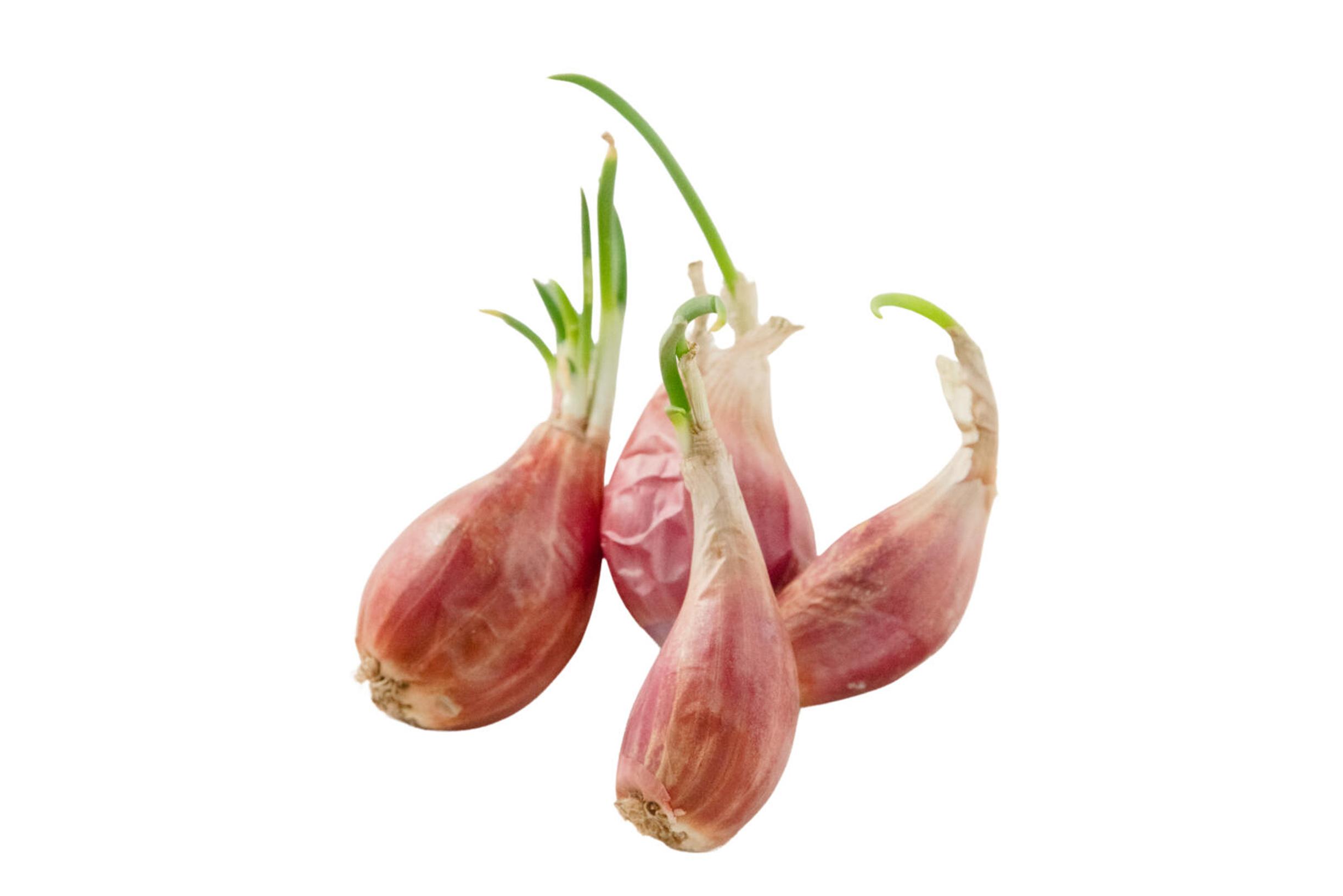
Tree onion: the sculptural, easy-care onion for harvests from spring to fall
Growing a perennial tree onion is effortless. You can harvest its hollow leaves as early as spring and early summer. Later in summer, the strongly flavored top bulbs are ready for picking. The bulbs underground are at their best in the fall when they’re young and juicy, advises horticulturist Outi Tynys.
Tree onion is among the earliest perennial edible plants, with many heritage strains still under cultivation. This species forms side bulbs underground and top bulbs at the end of the stalk. The playful-looking top bulbs remain decorative until fall. The plant has an intriguing way of spreading: its stalks bend down so the top bulbs can take root in the soil. It’s an excellent choice for gardeners interested in self-sufficiency.
How to grow tree onion successfully
Planting tree onion
Grow tree onion from seedlings or top bulbs. You can plant those sold in pots from spring to fall. Cover the bulbs at just under 10 centimeters (4 inches). Plant top bulbs in late summer or fall in small clusters at about 5 centimeters (2 inches).
Choose a growing spot where onion plants haven’t been cultivated for several years. Tree onion is generally healthy, but it can develop the same diseases as cooking onions.
Plant the onion in a sunny or partially shaded spot, preferably in a raised bed with loamy, well-draining soil. Tree onion thrives in fairly nutrient-rich soil.
Fertilizing tree onion
Provide a nitrogen-rich fertilizer, such as grass clippings, manure pellets, or partially matured compost in early summer. You can apply fully matured compost at any time—it’s especially recommended if you harvest heavily from your plants.
Harvesting tree onion
Gather leaf harvests early in the season and collect the plump top bulbs later in the summer. The bulbs in the ground are at their juiciest in the fall, but you can also use them in spring before growth starts.

Multiple varieties
Tree onion (Allium × proliferum) is part of our valuable cultivated plant heritage. Older strains have been preserved, which differ in vigor and in the color and size of the bulbs forming at the top. Typically, the top bulbs are 2–3 centimeters (about 0.8–1.2 inches) in diameter, but they can range from 1–5 centimeters (about 0.4–2 inches). Some strains produce pale flowers in addition to the bulbs, but these flowers do not yield viable seeds. The bulbs underground are about five centimeters (2 inches) in diameter.
How to keep tree onion productive
- Over the years, tree onion, which produces top and daughter bulbs, forms a tight cluster, causing the bulbs in the ground to suffer from overcrowding. Make sure the plant has enough space so that larger bulbs can develop, improving the vitality of the stand as well as the leaf harvest.
- Divide the colony in early spring before new growth emerges.
- If you grow tree onion as an ornamental, you can generally keep it in the same spot year after year. You can delay dividing by harvesting the small bulbs that form at the top. Use them in cooking or plant them in a new location.



